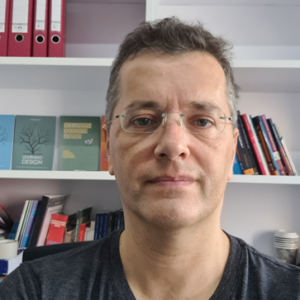5 Pointers To Make Talent And New Thinking Count
Recruitment, retention, employee L&D and performance strategies are doomed to fail. They cannot fully deliver in the absence of a comprehensive, holistic and inclusive approach to organizational performance.
Two challenges for sustainable organizational performance relate to having enough of the right skills as well as up-to-date know-how.
- A recent report by Docebo quotes research by the Aberdeen Group indicating that the average payback period for an external hire is 2.2 years, while the average tenure of a top candidate is 1.2 years. Clearly, this kind of negative equity is not sustainable. We believe that talent abounds and that the challenge is to be able to find, attract, select, and retain the right people as well as to leverage their talent productively.
- The ubiquity and volume of knowledge and new thinking can be daunting. The challenge is to be able to identify knowledge and new thinking that is relevant and beneficial to your organization, and then to have the disciplines and processes to convert this into the right institutional capacity for your organization.
The model below provides 5 pointers for a WHY FRAMEWORK to guide the context and understanding required to fully leverage talent and new thinking.

Organizational Clarity is paramount, with organizational Capacity and Capability being powerful levers and factors that affect levels of organizational Commitment and sense of Community potentially creating friction points that can abrade or create barriers to long-term stellar performance and health.
Let's examine the application of this approach and see how it can add value.
1. Be Clear On Your Company Purpose And Your Strategy To Achieve This
Have a clear "purpose," a compelling strategy and understand how organizational performance really works. Lengthen and grease the levers that drive performance and remove the friction points/barriers to your people working together in a committed, harmonious and collaborative manner to achieve your organization's purpose.
Only hire people who identify with your purpose and can align with your strategy. Marriott International and Airbnb have similar purposes, but their strategies to achieve their purpose could not be further apart. Good talent is different from the right talent! Most organizations are able to recognize good talent and this may be confirmed by psychometric and other tests. However, as good as the talent may be, it may not be the right talent for your organization. A talented person may perform exceptionally well in a company like Marriot but fail dismally at Airbnb.
Be clear about the type of person who will fit in and perform well within your organization and select specifically for this type of person, obviously with the skills you require or the ability to develop them.
Regarding new thinking, be clear about what leverages your strategy. Appoint Subject Matter Experts (SMEs) as curators to build, maintain and iterate the knowledge, systems, technology, and processes required to deliver your strategy. Help your SME teams to develop potential, future scenarios to have robust practices to test for future points of inflection and then to help your organization prepare in advance for such.
2. Design Capacity Requirements Around A Clear Strategy And Have The Disciplines In Place To Institutionalize, Iterate, And Develop Capacity Requirements To Meet Future Inflection Points/Disruptions
Hiring talent cannot compensate for the failure to develop and iterate the institutional (organizational) capacity required to deliver the strategy.
Building organizational capacity is all about productively transferring financial and human capital into organizational capacity. It is about institutionalizing the collective wisdom of your talent pool and transforming new knowledge into know-how that resides in the organization in terms of systems, techniques, processes, and ways of working. These must be easy-to-use and have easy-to-understand, on-the-job support that can be easily accessed anytime, anywhere, at the moment of need, without leaving the workflow. LMSs have the potential to be the reservoir of the collective wisdom of your organization as well as provide the tools to iterate and use it effectively. Make your LMS work in this regard!
Develop a mindset of anticipating possible future change and the disciplines to assess if and when this change will happen. Make assumptions and test them vigorously. In this regard, start iterating current knowledge and skills as well as seeking new knowledge and developing skills that may be needed for the future.
Be ready to reconfigure your organization capacity as required.
3. Understand The Capability Universe That Is Needed To Drive Success In Your Organization And Build An Evolutionary Approach To Employee Development
Rather than focus on the differences between baby boomers, generation Xs, Ys, and Zs, focus on what research indicates they have in common, namely: they all want to learn so that they can perform better, they all want feedback to help them improve further, and they all want a continuous learning process.
Establish and implement a collaborative, continuous learning and development mindset.
This cannot happen without due process. There are two aspects to this:
Firstly, a holistic and inclusive capability model is required with a process to gather and deliver continuous 360-degree feedback for each individual from relevant parties. We suggest an app that gathers and maps 360-degree feedback instantaneously in terms of how an individual's various capability sets manifest to those around them as measured by how it makes people feel about working with them (a previous article covers this). Areas of opportunity can then be developed and improved on an ongoing basis.
Secondly, as feedback is sought from people in different disciplines, the opportunity exists to gain different perspectives of where the cutting edge of new role capabilities may lie in terms of navigating future possible points of inflection. These can then be tested and researched for future application.
4. Make Commitment A Condition Of Entry And Tenure In Your Organization
You have the right to make commitment a condition of entry to and tenure with your organization. Ask for commitment and require it before you make a job offer. If the new hire is the right person, they will give it and honor it.
Organizations are open-ended communities of people formally assembled for a specific purpose. Entry into and tenure with an organization is then by definition conditional. It serves no purpose to ignore this. Entry and tenure with any organization should be conditional on the commitment of the person to use and continually develop the capabilities for which they were hired in pursuit of the organization's purpose. In addition, there should be a required commitment for each and every employee to make themselves a good person to work with. Require this commitment and let people understand up front that they will be held accountable. The flip side to this is that it is the responsibility of every team leader in your organization to nurture an environment of trust that individual differences will be respected and that the conflicts inherent in and between teams will quickly and fairly be resolved. Importantly, give your team leaders the skills to do this and hold them accountable.
5. Recognize That The Concept Of Organization Culture Is Fast Reaching Its Inflection Point
The markers signaling this have been around for a while and should not be ignored. At the risk of offending die-hards, the concept of culture is simply not suitable for modern organizations, where open-endedness is a fait accompli and agility is a necessity.
Rather, develop a great "Sense of Community" in your organization. Reap the benefits of welcoming committed, new employees into an organization where they are met by a sense of camaraderie. Help new employees to build an early, healthy emotional connection to your organization. This is done by helping them to feel a sense of belonging and a sense that they have influence over things that matter to them, reinforcing that they have a worthy role that is worthwhile. It is helping people to settle quickly and make an early contribution that will reinforce their decision to join as well as their willingness to stay.
Relook practices that inhibit the inherent collaborative nature of people. Some practices simply negate this by making the working environment destructively competitive and by recognizing and rewarding individuals excessively. Rather than try to drum in specific organizational values, reinforce universally common good ethics that will resonate with people from all cultures and backgrounds.
Identify the friction points/barriers to collaboration in your organization and remove them.
In Summary
Use these 5 pointers to build your own WHY FRAMEWORK to leverage talent and new thinking. It is not complex and the potential benefits are huge.









